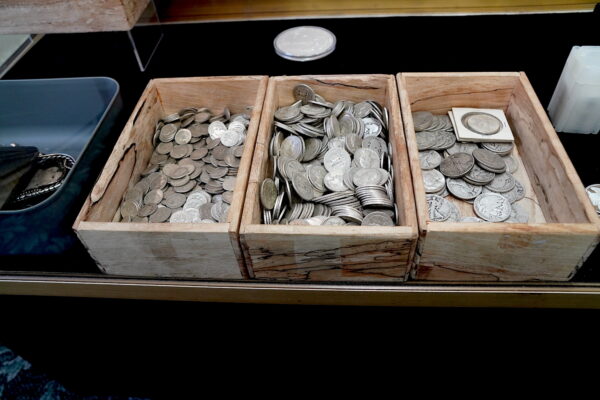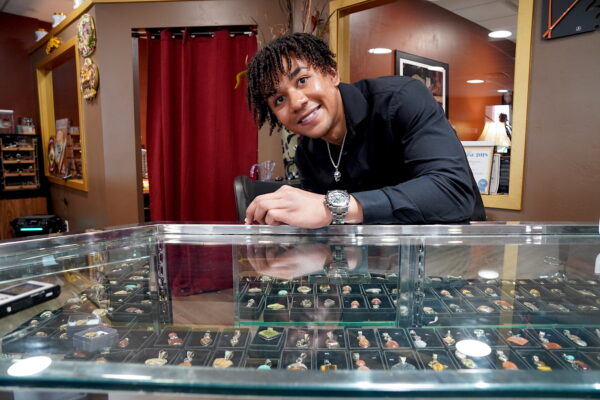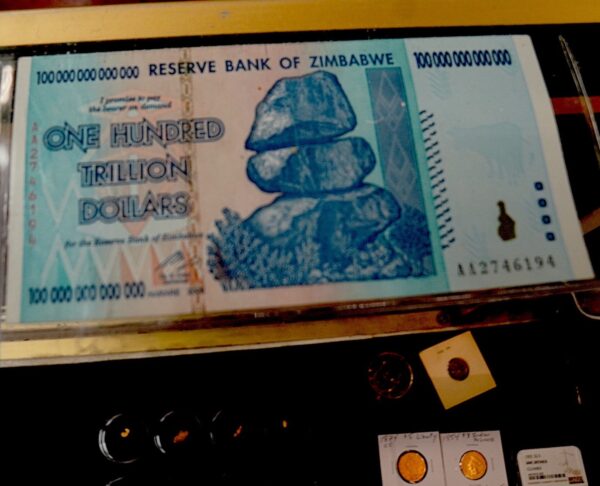Bullion shops see spike in interest following bank runs, SVB collapse
By Allan Stein
“It’s getting real,” Wright said, standing behind the glass showcase filled with various silver and gold bullion, coins, jewelry, and sterling in his busy Cottonwood, Arizona, shop on March 20.
“On a dime, it turned around—big time. It’s unprecedented,” he said. “We’ve seen the demand high, but not like this. Of course, SVB started this phase we’re in.”
And where the buying phase—more like a buying frenzy—ends up is anybody’s guess, Wright said.

Once regarded as a “barbarous relic” by the Wall Street financial sector, gold and silver are now in heavy demand to hedge against inflation and financial risk.
Wright said retail demand for precious metals could soon outstrip supply, and if more banks fail, to expect a full-blown “panic.”
He agreed that U.S. Treasury Secretary Janet Yellen didn’t help matters by not announcing a government bail-out for SVB after depositors withdrew $42 billion in early March, spurring the bank’s collapse.
Almost immediately after the run on SVB, people began buying gold and silver on the spot market, putting the squeeze on coin and bullion dealers large and small.
As of March 20, gold was on sale at $1,979 per troy ounce, and silver at $22.51 per ounce.
One troy ounce weighs 31.10 grams or 1.1 regular ounces.
Buy Low, Sell High
In November 2011, an ounce of gold rallied to a multi-year high of more than $2,000 while silver soared to almost $50 an ounce before the bull run on precious metals corrected to new lows.
Wright, whose uncle started Coin Heaven in 1985, said that demand for precious metals was robust during COVID-19.
“But after that bank fell, it created quite a panic, and people wanted to get their funds out of banks and into something real and tangible—gold and silver,” Wright told The Epoch Times.
“It’s something you own. There’s no third party involved. It’s solely yours.”
Galina Suvorova, owner of Galina Fine Jewelers in Cottonwood, said business has been steadily increasing since the fall of SVB, and “there’s more interest in bullion—specifically, bullion and coins.”

“It’s been like this for a couple of years now,” Suvorova said. “Before, it used to be more investors—people doing it for years. Nowadays, we’re getting new people inquiring how to start, what to do with it, what to buy.”
She said the biggest seller at the moment is gold coins, although silver sales are also way up, given their much lower cost, even with higher premiums.
Suvorova said she has yet to encounter supply issues during market dips when silver and gold prices go down.
“During those low dives, it is not the supply that’s suffering; it’s dealers holding back because they have an investment in it and don’t want to lose money,” Suvorova told The Epoch Times.
“Of course, everybody buys more during those times.”
In general, her customers purchase gold and silver to hedge against economic turmoil and as a financial investment, since “there’s money to be made” in precious metals as a historic store of value.
“It’s just what you do with it and how you use it. You can buy investment coins or just for the rally,” Suvorova said.

Many of Suvorova’s new customers are first-time buyers following the collapse of SVB. She expects the buying trend to remain brisk as long as uncertainty reigns in the financial equities and bank sectors.
“Coins and precious metals are a smart investment. We still have fiat currency worldwide, but it’s tied to precious metals prices,” Suvorova said.
“Even if nothing goes crazy, it’s still solid money—cold, heavy money.”
Wright said that substantial risk in the financial markets can only be good for precious metals demand in the long run.
No Top In Sight
“Near term, I do think we’re heading up [in price]. It’s been years in building. An event like banks going down is the catalyst to spark this thing to take off and charge higher,” Wright said.
“When the COVID scare happened three years ago, it kicked off quite a buying frenzy. It sustained for two-and-a-half years or so. Later in 2022, it tapered off.”
In the current market, Wright said he is buying as much silver and gold as he can wholesale to keep pace with demand.
“We cannot satisfy demand based on whoever walks in the door. We have to get more product from our wholesaler,” he said, and people are “nervous. They do not trust the banks—for a good reason.”
“We could get into a pinch where [supply becomes] strained. At that point, we could see premiums go even higher relative to spot [price].”
Wright said dollars, quarters, dimes, and nickels containing 90 percent silver, known as “junk silver,” fetch high premiums after the U.S. Mint stopped producing them in 1964.
“Whatever is floating around—that’s it,” he said.
In these troubled times, Wright recommends setting priorities by stockpiling food and water before buying gold or silver.
“Take care of yourself that way. Then get into metals” to protect your assets, he said.

